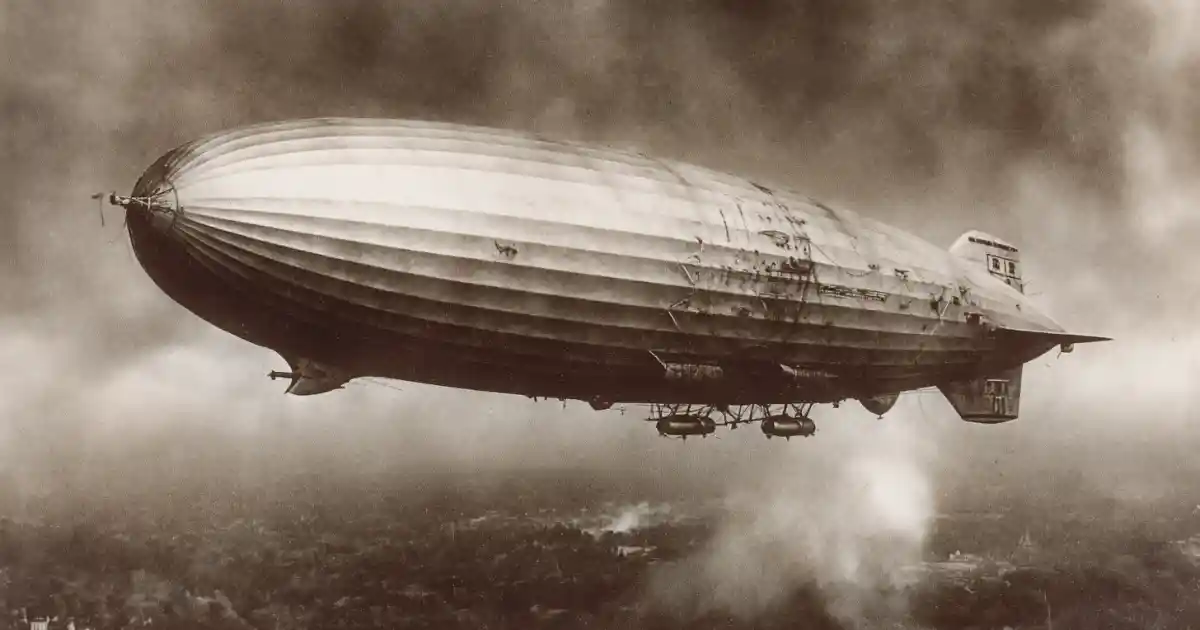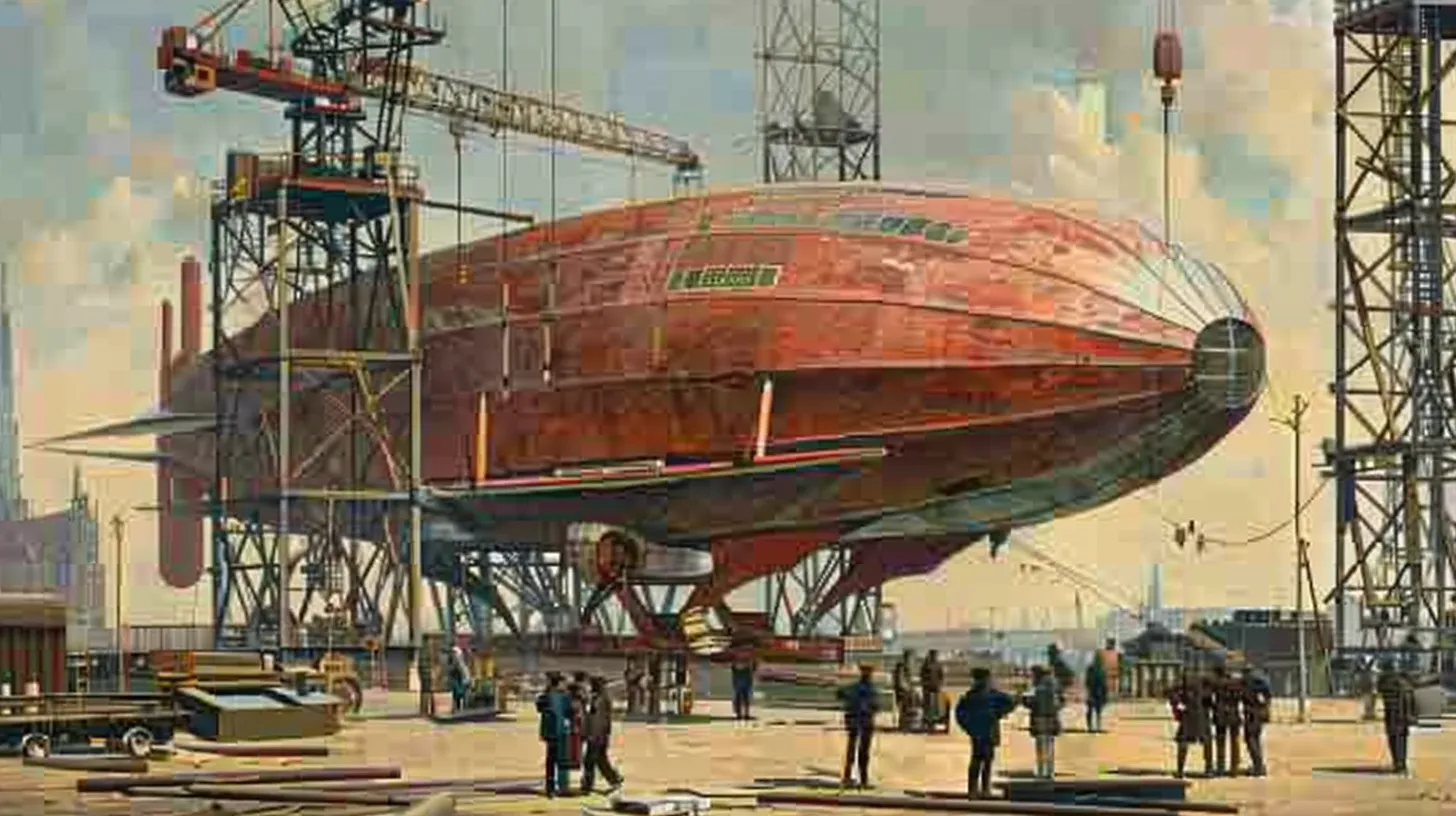
© History Oasis
The Graf Zeppelin, a marvel of early 20th-century aviation—standing as a testament to the ingenuity, determination, and vision of its creators and crew.
Named after the pioneering German airship designer Ferdinand von Zeppelin, this colossal dirigible embarked on a remarkable journey that pushed the boundaries of aerial exploration and captured the imagination of people around the world.
From its groundbreaking circumnavigation of the globe to its role in establishing the first transatlantic passenger air service, the Graf Zeppelin's story is one of triumph, innovation, and ultimately, the bittersweet end of an era.

Graf Zeppelin, a monumental airship that dominated the skies in the early 20th century, was aptly named after the visionary German airship pioneer, Ferdinand von Zeppelin, whose groundbreaking designs revolutionized the field of aviation.
The airship's conception and operation were masterfully orchestrated by Hugo Eckener, the esteemed chairman of Luftschiffbau Zeppelin, a company dedicated to the construction and advancement of these colossal dirigibles.
Eckener's unwavering commitment to the project, coupled with his exceptional leadership skills, ensured that the Graf Zeppelin would come to fruition.

Graf Zeppelin, an awe-inspiring marvel of engineering, embarked on an illustrious career that spanned 590 flights, covering an astonishing distance of nearly 1.7 million kilometers (over 1 million miles).
This unparalleled achievement solidified its place in hot air balloon and aviation history, as it became the first aircraft ever to surpass the monumental milestone of flying over a million miles.

The Graf Zeppelin, a behemoth of the skies, required the expertise and dedication of a crew of 36 individuals to maintain its smooth operation, while also accommodating up to 24 passengers in its spacious cabins.
At the time of its construction, the Graf Zeppelin held the prestigious title of being the longest and largest airship in the world.
The airship's impressive size and passenger capacity not only symbolized the grandeur of the era but also foreshadowed the future of luxury air travel.

Graf Zeppelin etched its name in aviation history when it completed the first circumnavigation of the world by an airship in 1929, a momentous journey that spanned an incredible 21 days.
This unprecedented feat showcased the airship's remarkable endurance and reliability, as it traversed vast oceans and continents, capturing the imagination of people worldwide.
Not content with this singular achievement, Graf Zeppelin further pushed the boundaries of aerial exploration by accomplishing the first nonstop flight across the Pacific Ocean.

The Graf Zeppelin's innovative use of Blau gas, a gaseous fuel derived from coal, in addition to the conventional hydrogen, proved to be a game-changer in terms of the airship's operational capabilities.
This clever combination of fuels granted the Graf Zeppelin an unprecedented advantage, significantly extending its range and endurance compared to airships that relied solely on hydrogen.
The implementation of Blau gas showcased the forward-thinking approach of the airship's designers.

The construction of the Graf Zeppelin was made possible through a combination of public subscriptions and support from the German government, showcasing the widespread enthusiasm and belief in the potential of this groundbreaking airship.
To offset the substantial operating costs, the Graf Zeppelin's management employed innovative strategies, such as the sale of special postage stamps to eager collectors, which not only generated revenue but also fostered a sense of public engagement and pride in the airship's achievements.
The project also garnered the support of influential figures like William Randolph Hearst, whose backing further bolstered the airship's financial stability.

From 1928 to 1937, the Graf Zeppelin embarked on a series of groundbreaking long-distance flights that pushed the boundaries of aerial exploration and opened up new frontiers for commercial air travel.
These pioneering journeys included thrilling expeditions to the frigid landscapes of the Arctic and the exotic destinations of the Middle East.
Capturing the imagination of people around the world and showcasing the airship's unparalleled capabilities in conquering vast distances and navigating diverse climates.
Perhaps the Graf Zeppelin's most significant contribution to the advancement of air travel was its establishment of the first commercial passenger air service between Germany and Brazil.
A remarkable feat that spanned five years and demonstrated the viability of long-distance air transportation.

The rise of the Nazi Party in Germany in 1933 marked a significant shift in the Graf Zeppelin's role, as the iconic airship was increasingly utilized for propaganda purposes by the new regime.
One particularly notable instance of this was when the Graf Zeppelin flew in tandem with the equally impressive Hindenburg airship, creating a awe-inspiring spectacle in the skies above Germany just before a crucial national election.
This carefully orchestrated display was designed to evoke a sense of national pride and unity, showcasing the technological prowess and superiority of the German nation under Nazi leadership.
The sight of these two colossal airships, symbols of German engineering and innovation, flying side by side served as a powerful visual metaphor for the strength and ambition of the Third Reich, effectively captivating the public imagination and garnering support for the Nazi Party's political agenda.

The Graf Zeppelin's impeccable safety record stands as a testament to the skill, dedication, and meticulous attention to detail of its designers, engineers, and crew.
Throughout its illustrious career, the airship flew an astonishing 1.7 million kilometers, a distance that would take one around the Earth more than 42 times, while safely carrying over 13,000 passengers without a single injury.
This remarkable achievement was unheard of in an era when air travel was still in its infancy and the risks associated with flying were considerably higher than they are today.

The Graf Zeppelin's illustrious career came to an abrupt end just one month after the tragic Hindenburg disaster in 1937, which cast a dark shadow over the future of airship travel and led to a widespread loss of confidence in the technology.
Despite its own impeccable safety record, the Graf Zeppelin was ultimately unable to escape the fallout from the Hindenburg incident, and the decision was made to retire the airship from active service.
The once-majestic airship met a rather ignominious fate in 1940 when, on the orders of Hermann Göring, a prominent figure in the Nazi regime, it was dismantled so that its precious metal components could be repurposed for the construction of aircraft.
This decision, driven by the pressing needs of the German war machine, marked a sad and unceremonious end to the Graf Zeppelin's story, as the airship that had once conquered the skies and captured the hearts and minds of people around the world was reduced to scrap metal in service of the Nazi war effort.